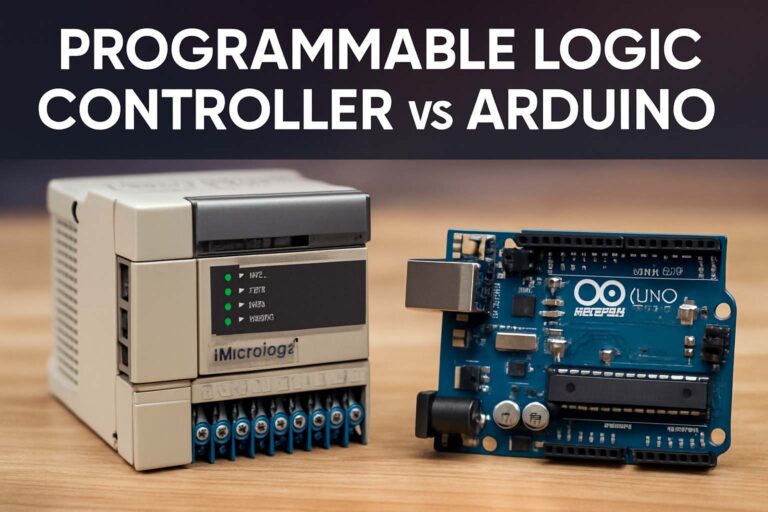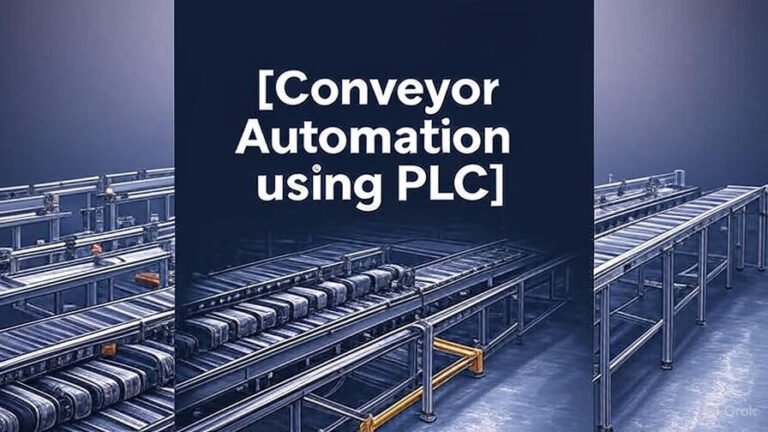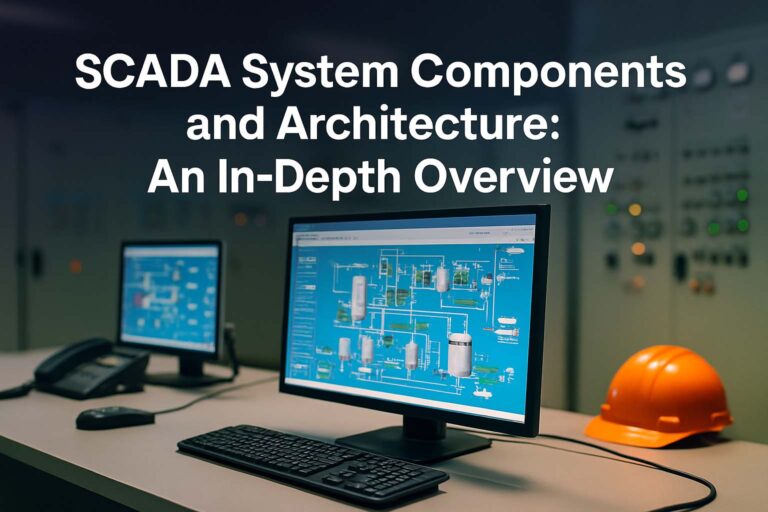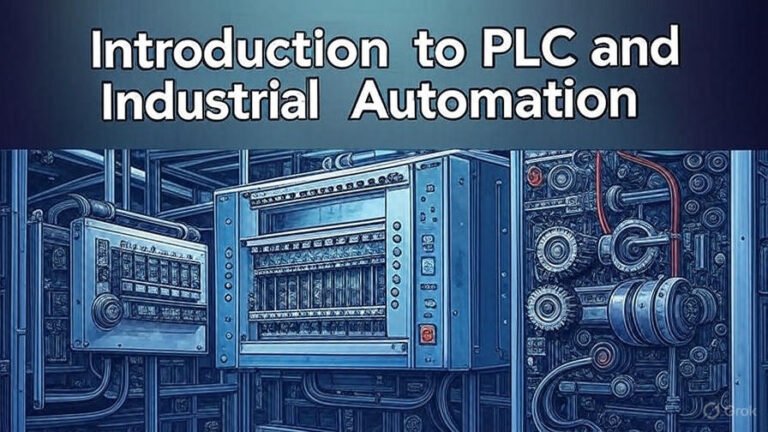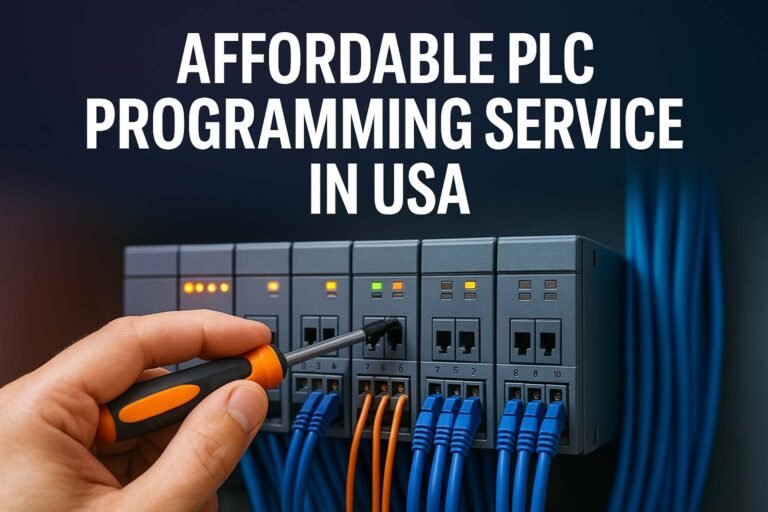What is a Programmable Logic Controller (PLC) and How Does it Work?
Introduction to Programmable Logic Controller
A Programmable Logic Controller (PLC) is a specialized industrial computer used to automate electromechanical processes. These processes include tasks in manufacturing lines, power plants, and building systems. PLCs are the heart of industrial automation and are known for their rugged design, reliability, and flexibility.
Unlike general-purpose computers, PLCs are built to survive harsh industrial environments. They are resistant to heat, dust, moisture, and electrical noise. A PLC takes inputs from field devices, makes decisions based on programmed logic, and sends outputs to actuators or other control elements.
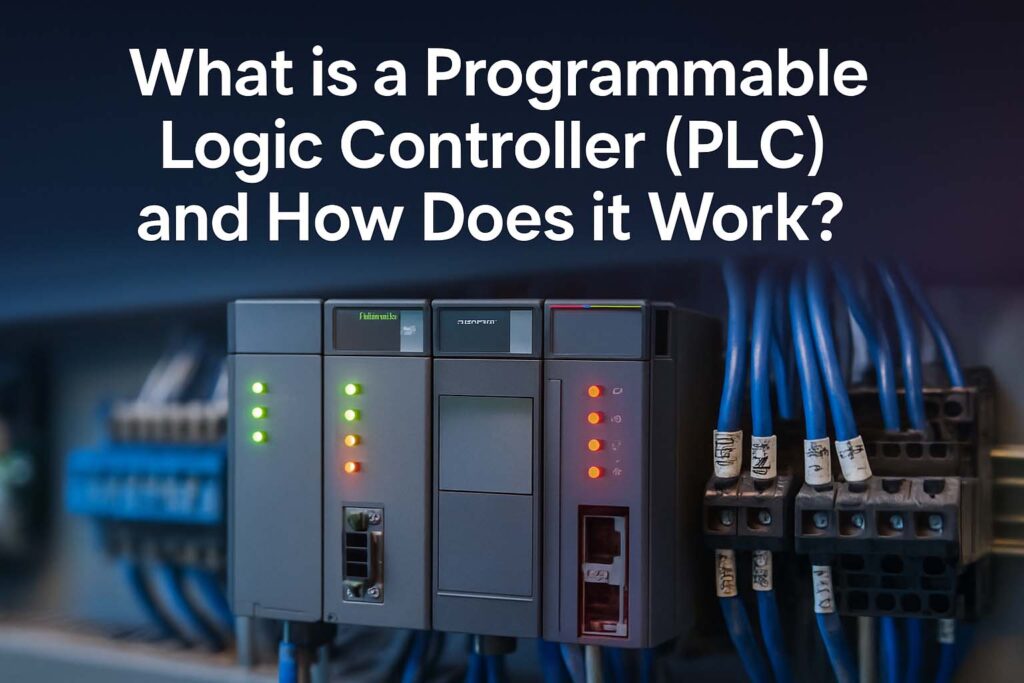
PLCs have replaced traditional relay-based control systems because they are easier to program, maintain, and scale. They’re widely used in industries such as automotive, oil and gas, food processing, water treatment, and many more.
Understanding the Working of a Programmable Logic Controller
To understand how a programmable logic controller works, it’s essential to look at its basic components and operations. A PLC works in a continuous loop known as the scan cycle. This cycle consists of four major stages:
- Input Scan: The PLC reads signals from input devices such as sensors, switches, and encoders.
- Program Execution: The PLC executes the user-defined logic stored in its memory.
- Output Scan: Based on the logic results, the PLC energizes or de-energizes output devices like relays, motors, and alarms.
- Housekeeping: The PLC performs internal diagnostics and communication tasks before restarting the cycle.
This scan process happens within milliseconds, making PLCs extremely fast and suitable for time-sensitive applications.
Know more about Earthing Transformer Working Principle
Components of a Programmable Logic Controller
A typical programmable logic controller is made up of the following parts:
| Component | Description |
|---|---|
| CPU (Central Processing Unit) | The brain of the PLC that processes input data and executes control logic |
| Power Supply | Converts AC to DC voltage for PLC operation |
| Input Modules | Interface to field input devices (sensors, switches, etc.) |
| Output Modules | Interface to field output devices (solenoids, contactors, indicators, etc.) |
| Communication Ports | Allow data exchange with other PLCs, SCADA, or computers |
| Programming Device | Used to write, modify, and monitor the logic program |
These components can be modular or compact, depending on the type and size of the PLC.
Types of Programmable Logic Controllers
There are several types of programmable logic controllers based on size and application:
Compact PLC
Also known as a fixed PLC, it has a predefined number of input/output ports. It is cost-effective and used in smaller applications like packaging machines or lighting control.
Modular PLC
This PLC allows users to add or remove I/O modules as needed. It is suitable for large, complex systems and offers greater flexibility.
Rack-Mounted PLC
A rack-mounted PLC houses modules in a standard rack and can control very large industrial systems. These are used in plants requiring high-speed processing and redundancy.
Know more about PLC and Industrial Automation
PLC Programming Languages
PLCs are programmed using industrial programming languages. The most common language is Ladder Logic, which resembles electrical relay logic diagrams. Other IEC 61131-3 standard languages include:
- Function Block Diagram (FBD)
- Structured Text (ST)
- Instruction List (IL)
- Sequential Function Chart (SFC)
Each language has its use case. For example, Ladder Logic is ideal for electrical engineers, while Structured Text is more suitable for complex mathematical operations.
Example of PLC Operation
Let’s consider a real-world example of a programmable logic controller in a water tank system.
Objective
Fill a water tank automatically using a level sensor and pump.
Inputs
- Low-level sensor (digital input)
- High-level sensor (digital input)
Output
- Water pump (digital output)
Logic
- If low-level sensor is ON and high-level sensor is OFF, then turn ON the pump.
- If high-level sensor is ON, then turn OFF the pump.
The PLC continuously scans the inputs, executes the logic, and controls the pump based on water levels.
Know more about Conveyor Automation using PLC Systems
Advantages of Using a Programmable Logic Controller
PLCs offer many advantages over traditional control systems:
- Reliability: Designed for continuous operation in harsh environments.
- Flexibility: Logic changes can be made through software without rewiring.
- Scalability: Easily expanded by adding new modules.
- Diagnostics: Built-in tools help troubleshoot problems quickly.
- Speed: High-speed processing for real-time applications.
- Integration: Easily interfaces with SCADA, HMI, and IoT platforms.
Applications of Programmable Logic Controllers
The use of programmable logic controllers spans various industries:
- Manufacturing Automation: Conveyor belts, robotic arms, and packaging machines.
- Energy Sector: Control systems in power plants and substations.
- Building Management: HVAC systems, elevators, and lighting.
- Food & Beverage: Bottling plants, mixers, and processing lines.
- Water Treatment: Pumping stations, chemical dosing, and filtration control.
Because of their versatility, PLCs are an essential tool for any industry requiring automation.
Key Features to Consider When Selecting a PLC
When choosing a programmable logic controller, engineers must consider:
- Number of I/O Channels: Matches with system complexity.
- Processing Speed: Needed for high-speed control applications.
- Memory Capacity: Determines how large and complex the program can be.
- Communication Protocols: Support for Ethernet, Modbus, Profibus, etc.
- Environmental Rating: Resistance to temperature, vibration, and dust.
- Expandability: Ability to add extra modules in the future.
A good match between the PLC and the application ensures efficient performance and long-term reliability.
Know more about What is the Protection Scheme of an Alternator Against Inter Turn Fault?
Future Trends in Programmable Logic Controllers
As industries move toward smart manufacturing, programmable logic controllers are evolving. Key trends include:
- Integration with IoT: PLCs now support real-time cloud data sharing and analytics.
- Edge Computing: On-device processing for faster decision-making.
- Cybersecurity: Secure communication and firmware to prevent cyberattacks.
- Wireless Communication: Reduces wiring and installation costs.
- AI Integration: Some modern PLCs use AI algorithms to optimize performance.
These trends are transforming how PLCs are designed and deployed in Industry 4.0 environments.
Common Brands of PLCs
Some leading PLC manufacturers include:
| Brand | Known For |
|---|---|
| Siemens | Industry leader with TIA Portal platform |
| Allen-Bradley | User-friendly Rockwell Automation tools |
| Mitsubishi | Compact and modular systems |
| Schneider | EcoStruxure-ready PLCs |
| Omron | High-speed and precision control |
Each brand offers a range of models, from beginner-friendly to advanced industrial use.
Know more about Best PLC Systems for Manufacturing Plants UK
Conclusion
A programmable logic controller (PLC) is a powerful and essential tool for modern automation. It replaces traditional relay logic with a flexible, programmable system that is easy to maintain and scale. From controlling a simple motor to managing an entire factory process, PLCs make automation smarter and more efficient.
Understanding how a PLC works—its components, programming, and operation—enables engineers and technicians to design better systems. With constant innovation in PLC technology, industries are becoming more productive, connected, and intelligent.
Follow Us on Social:
Subscribe our Newsletter on Electrical Insights to get the latest updates in Electrical Engineering.
#ProgrammableLogicController, #PLC, #IndustrialAutomation, #ControlSystems, #AutomationEngineering, #PLCBasics, #PLCTutorial, #ElectricalEngineering, #IndustrialControl, #PLCProgramming, #AutomationTechnology, #SCADA, #MachineAutomation, #PLCTraining, #FactoryAutomation

